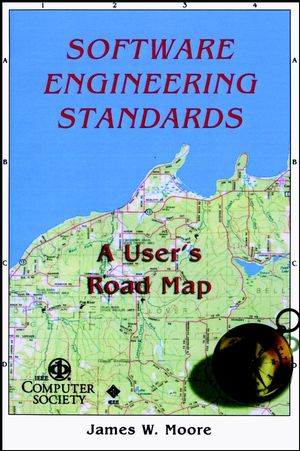Software Engineerng Standards: A User's Road MapISBN: 978-0-8186-8008-3
Paperback
328 pages
December 1997, Wiley-IEEE Computer Society Press
 This is a Print-on-Demand title. It will be printed specifically to fill your order. Please allow an additional 10-15 days delivery time. The book is not returnable.
|
||||||
Software Engineering Standards: A User's Road Map describes the
scope, roles, uses, and development trends of the most widely used
software engineering standards. The book concentrates on important
software engineering activities-quality and project management,
system engineering, dependability, and safety. The analysis and
regrouping of the standard collections exposes you to key
relationships between standards. James Moore provides valuable
insights that allow you to select standards to fill your specific
needs with precision.
The book presents two types of diagrams that will guide you in designating and selecting the standards that meet your specific goals. The first is a layered view of standards that illustrates the internal relationships among standards within a collection. The road map, the second type, illustrates the external relationships among standards in same or different collections. By using the road map diagrams each chapter begins at a different starting point and leads you toward the selection of the software engineering standards that achieve your goals.
The book will appeal to software engineering standards users including senior technical professionals or managers with a background in software development. Standards-writers or professionals working on new or revised software engineering standards will find the book useful as well.
The book presents two types of diagrams that will guide you in designating and selecting the standards that meet your specific goals. The first is a layered view of standards that illustrates the internal relationships among standards within a collection. The road map, the second type, illustrates the external relationships among standards in same or different collections. By using the road map diagrams each chapter begins at a different starting point and leads you toward the selection of the software engineering standards that achieve your goals.
The book will appeal to software engineering standards users including senior technical professionals or managers with a background in software development. Standards-writers or professionals working on new or revised software engineering standards will find the book useful as well.



